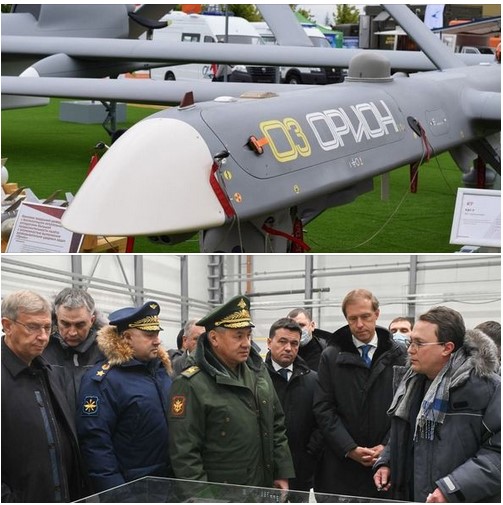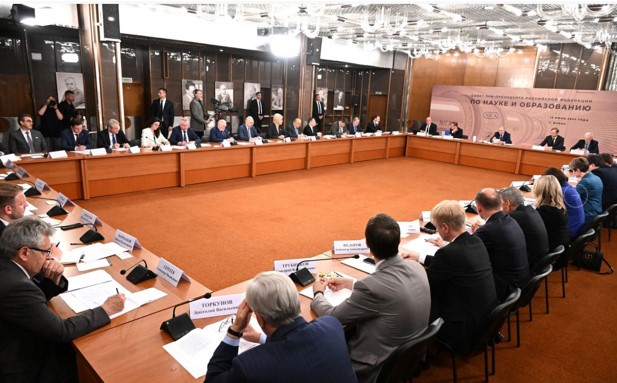Tetiana Hryn’ova
On July 8, the Okhmatdyt children’s hospital in the city of Kyiv was struck by a Russian cruise missile, killing two people and injuring more than 30. A joint investigation by the Security Service of Ukraine and Prosecutor General’s Office concluded that the Kh-101 missile used in the strike was manufactured in the second quarter of 2024 – long after the imposition of Western sanctions intended to cripple the Russian arms industry – by the Raduga Design Bureau.
Raduga and its production facility the Dubnensky Machine-Bulding Plant are involved in the design and production of many weapons used by Russia to attack Ukraine such as military planes (Su-25, Su-34, etc.) and missiles (Kh-55, Kh-101, etc.). Both are located in the “naukograd” (science-city) of Dubna, about 100 km north of Moscow. The reason for the science-city moniker can be found across the Volga river, from the military complex, on the picturesque campus of the Joint Institute for Nuclear Research, commonly known under its abbreviation of JINR.
JINR was created in 1956 as an international research center for nuclear science and currently claims 16 member states and 990 collaborating institutes from all over the world. Its charter states that “The Institute activities are carried out in accordance with the generally accepted principles and norms of the international law. The research results obtained at the Institute can be used only for peaceful purposes for the benefit of the whole mankind.”
Before the dissolution of the Soviet Union, JINR and Raduga were the main employers in the city. Since then they have worked together to create a new “Silicon Valley” on the Volga, which led to the establishment of the Dubna Special Economic Zone (SEZ) and a new educational institution, Dubna State University, where JINR scientists and engineers train specialists for the enterprises in the Dubna area. Many of these enterprises are involved in military projects and are currently under sanctions: for instance the new production facility of the Kronstadt company, which was created in 2021 to produce reconnaissance and attack drones for the Russian army, and the LLC YADRO FAB DUBNA company involved in the manufacturing of electronic components used in numerous weapons systems operated by Russia’s military. Other examples include Promtech-Dubna JSC, a leading Russian manufacturer of defense-related marine, aircraft and spacecraft equipment, and Prepreg-Dubna LLC which is engaged in the production of various technical fabrics based on carbon, glass and aramid fibers which are used in particular for shipbuilding and aircraft manufacturing.
Why is JINR, a hub of fundamental scientific research and a leading destination for foreign scientists in Russia over the years, located next to these centers of weapon production and design ? An important part of the answer probably has to do with knowledge and technology transfers: the fundamental scientific research carried out at JINR involves cutting-edge technologies in fields such as electronics and chemistry, which also have military applications – so called “dual-use” technologies.
The JINR position as an organization working on projects relevant to the military-industrial complex of Russia was highlighted by the Meeting of the Council for Science and Education of the Russian Federation held on June 13, 2024 in JINR under the chairmanship of Vladimir Putin. The discussion in the meeting centered on the new program of fundamental scientific research in Russia, which aims to ensure “the interests of the defense and security of the state, first of all, solving the problems of the Special Military Operation.” In particular drone R&D programs were presented as an example of successful cooperation. Projects in JINR included development of electrical chemical generator based fuel cell power, which will allow drone take-off weight of up to 750 kg, increase in its flight time and accelerated refueling time for long-distance transportation of cargo in harsh climate conditions. While Dubna State University, which is run by JINR, launched a dedicated program in 2023 to train 30 engineers per year for the Kronstadt drone production plant in Dubna. Of about 180 Russian institutes in JINR, at least 77 are currently under sanctions for their support of the war and involvement in the military programs: 15 in EU, 33 in USA 33, 19 in Switzerland, 6 in UK, and 69 in Ukraine. There are also joint ventures between JINR and Russian Federal Security Services, which has counterintelligence, surveillance and cyber operations among its remits.
How can this be compatible with the JINR mission statement ? Although JINR is supposed to be governed by its Committee of Penipotentiaties, made up by representatives of all the member states, its directors have been Russian scientists for 65 out of its 68 years of existence, its employees (including foreign members) paid Russian taxes, and Russia contributed to over 80% of the JINR budget. WIth all that it is not surprising that a dominant component of JINR policy was and is promotion of Russian government interests at home and abroad.
Very enlightening in this effect is the JINR position on the Russian aggression against Ukraine. Since 2014 all Ukrainian institutes in the territories occupied by Russia were forced into exile in other parts of Ukraine. In a kind of scientific identity theft, Russia then proceeded to create new entities on their original premises, with identical or similar names. JINR then proceeded to switch its collaboration from the legitimate Ukrainian institutes to these newly-created impostors. JINR has also regularly hosted international conferences and meetings in the occupied territories. These activities led to multiple publications and conference proceedings in which these territories are advertised as located in Russia, a claim that has been allowed to spread throughout scientific websites, journals and databases. This contributes to the Russian government’s aims of legitimizing and normalizing the Russian occupation of Ukrainian territories within the scientific community.
Similarly, for many years JINR management allowed North Korean scientists to work in JINR, circumventing the sanctions imposed by the United Nations (UN). Even though North Korean participation was officially suspended in 2015, JINR internal documents show that North Korea still contributes to the JINR budget and is represented on the Committee of Penipotentiaties. This is consistent with Russia’s ongoing “special relationship” with North Korea, which involved a Russian veto to a UN resolution strengthening sanctions against the country in March 2024 and the supply by North Korea of missiles and ammunition which have been used against Ukraine.
All the above makes clear that JINR broke its own charter, it does not conform to “the norms of the international law” and its involvement in Russian military programs, in violation of its commitment to perform research only “for peaceful purposes”, mean that it can no longer be considered a peaceful research institution focused on fundamental research. In this context, the decisions of Czechia, Poland and Ukraine to stop or suspend their participation in JINR are welcome, if overdue. But there are still over 70 states with scientific institutions listed among the JINR collaborating institutes in its Topical plan for 2024. These remaining collaborations provide indirect support to the actions of JINR in the war against Ukraine, and it is critical that these are stopped at the earliest opportunity. A first step in this direction would be to add JINR to the lists of sanctioned organizations that already include many Russian institutions. While this will not stop the war, it will help to put additional pressure on Russia and send a clear message that all those who contribute to the Russian war effort will be held accountable.

On January 27, 2022, the Minister of Defense of Russia, Sergei Shoigu, was shown the first flight sample of the reconnaissance and combat drone “Orion” in Dubna (https://www.facebook.com/otdelraket/)

On June 13, 2024, Putin leads a meeting at the JINR. This is the room that is normally used by the international governing board of JINR. The Director of the JINR, Trubnikov, is also present, providing explanations and commentary.
